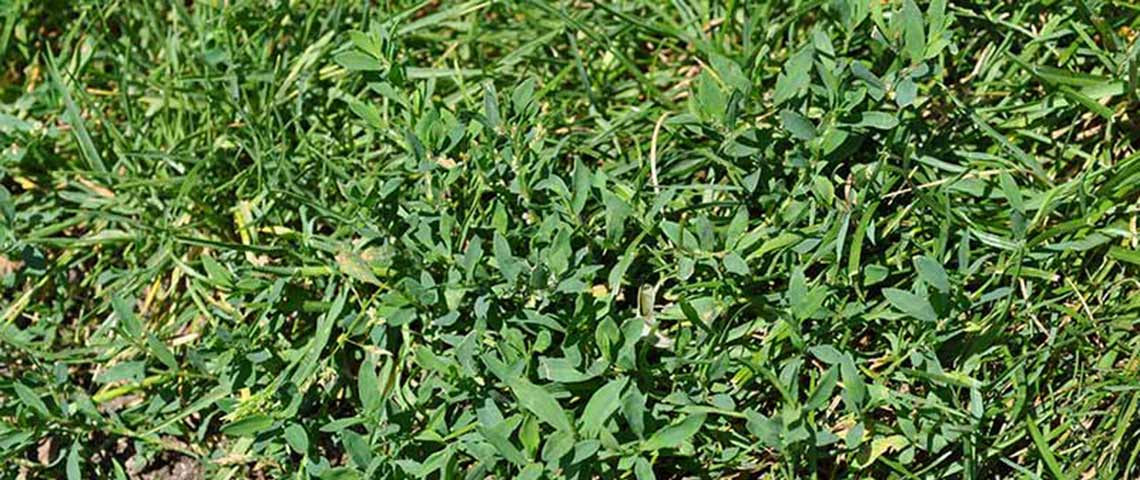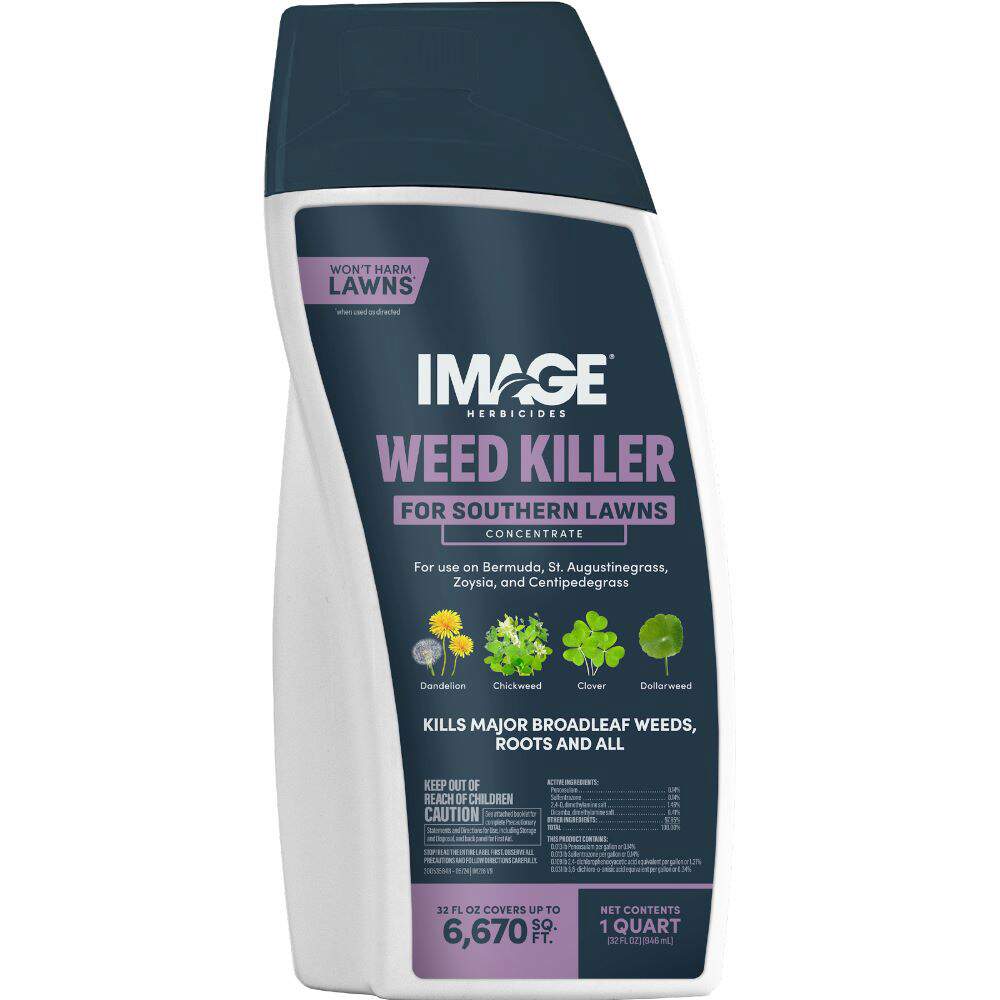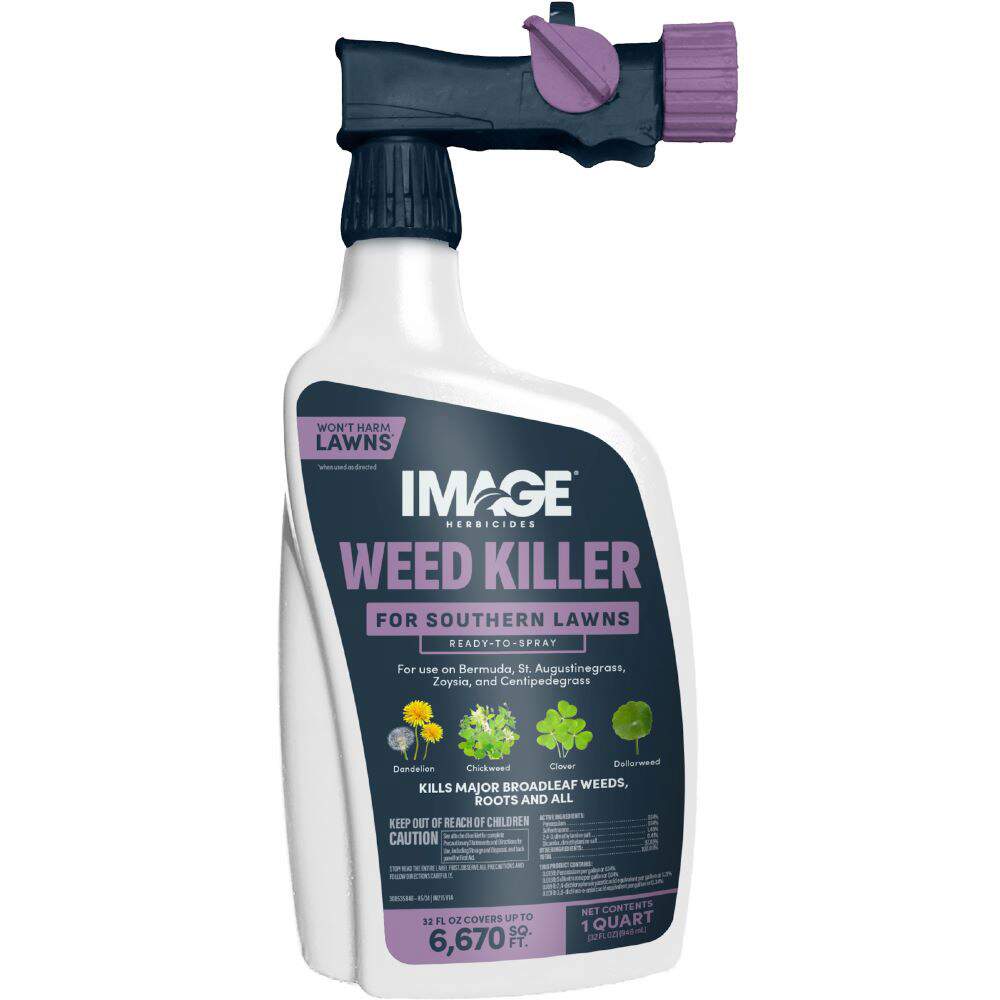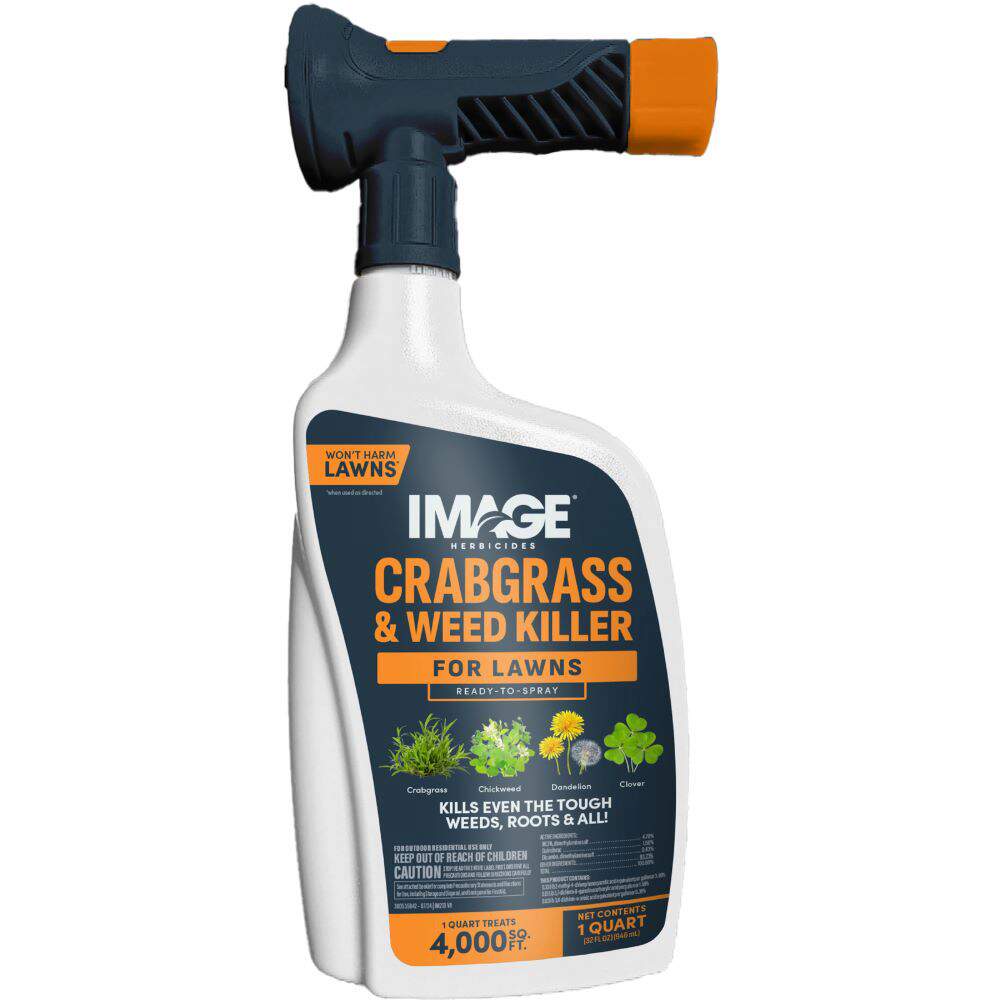HOW TO IDENTIFY KNOTWEED
As its name suggests, prostrate knotweed forms a dense, knotted mat of stems and foliage. Its smooth, branching stems grow up to 3 feet long as they zig-zag across the ground. Anchored by a taproot, this annual broadleaf weed typically stays close to the soil, where mower blades don't reach.
Smooth, blue-green leaves alternate along knotweed's tangled stems. The leaves grow on short leafstalks. At the base of each leafstalk, a thin papery sheath encircles the stem. The pinkish sheaths give the leaf nodes a swollen, jointed look. Small clusters of whitish-green or purple-pink flowers appear near stem ends in midsummer to early fall.
Knotweed is often confused with spurge, but spurge stems emit a milky white sap when broken or cut. Knotweed stems do not. Spurges also lack knotweed's papery sheath at the base of leaves.
WHERE AND WHY KNOTWEED GROWS
Knotweed grows throughout the United States, at all elevations and in the roughest conditions. It can withstand drought, flooding, heat and cold. This weed adapts easily to a wide variety of soils, flourishing even in contaminated soil. Compacted, poorly maintained turf areas are prime targets for knotweed invasions.
Fast-growing and aggressive, this invasive weed spreads primarily by seeds. A single prostrate knotweed plant can produce more than 6,000 seeds. Once knotweed gets established, toxins from its roots and stems can prevent other plants from thriving nearby.
HOW TO CONTROL KNOTWEED
When treating knotweed or other lawn weeds, always read product labels thoroughly before applying. Some lawn grasses are sensitive to herbicides, so make sure the label lists your grass type. Only treat established lawn grasses, not newly seeded areas. For best results, treat knotweed as small, new plants emerge.
Image Herbicides offer several highly effective liquid products to kill or control knotweed:
- Image Herbicides Crabgrass, Nutsedge & Weed Killer for Lawns, available in Ready-to-Spray and Concentrate formulas, is a selective weed killer that starts working on contact. This post-emergent herbicide kills prostrate knotweed to the root.
- Image Herbicides Crabgrass & Weed Killer for Lawns, available in Ready-to-Spray and Concentrate formulas, kills knotweed and other tough listed weeds — roots and all. For best results, apply this selective post-emergent herbicide when knotweed is actively growing.
- Image Herbicides Weed Killer for Southern Lawns, available in Ready-to-Spray and Concentrate formulas, starts working immediately to kill knotweed to the root in southern lawns. You'll see results in hours.
Knotweed Control Tip: Knotweed is an annual weed that dies each year at season's end. But it comes back again from seed each spring. Effective control means breaking that cycle. Treat knotweed before it can flower and set seed each year.
If you prefer a granular option for post-emergent weed control, Pennington Full Season Weed & Feed 25-0-8 can help. This combination fertilizer and herbicide product controls knotweed and feeds your lawn.
Always read product labels thoroughly and follow instructions, including guidelines for lawn grasses, frequency of applications and seasonal maximums that may apply.
KNOTWEED GALLERY
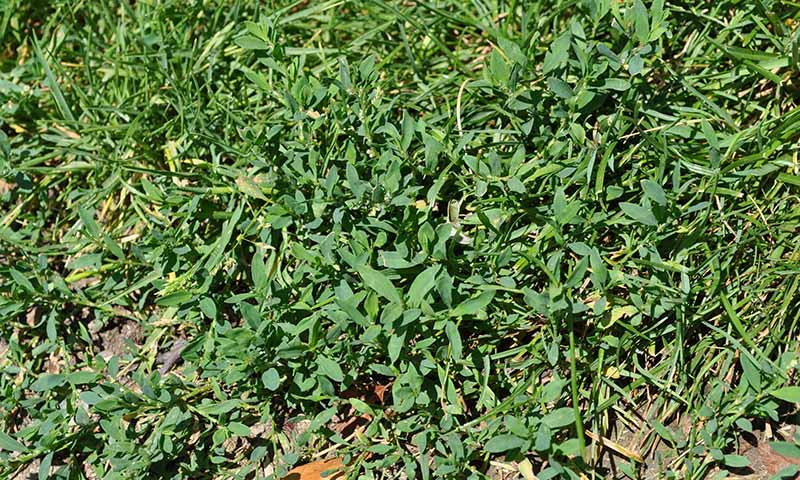
Knotweed Patch
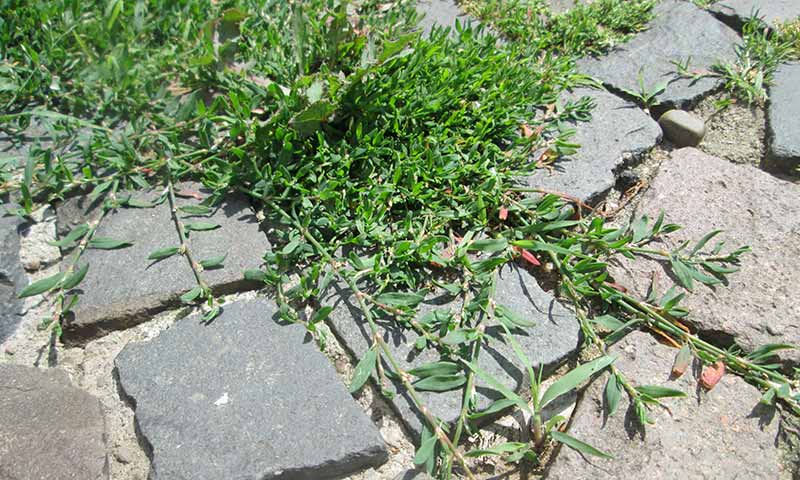
Knotweed on Pavers
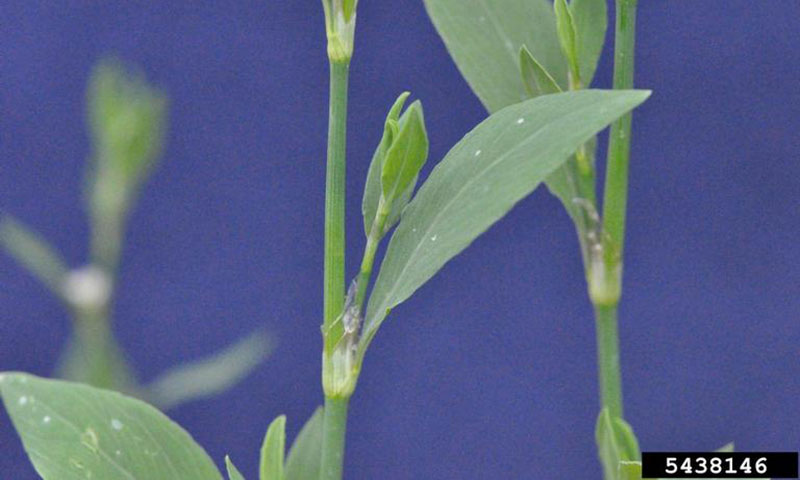
Knotweed Foliage
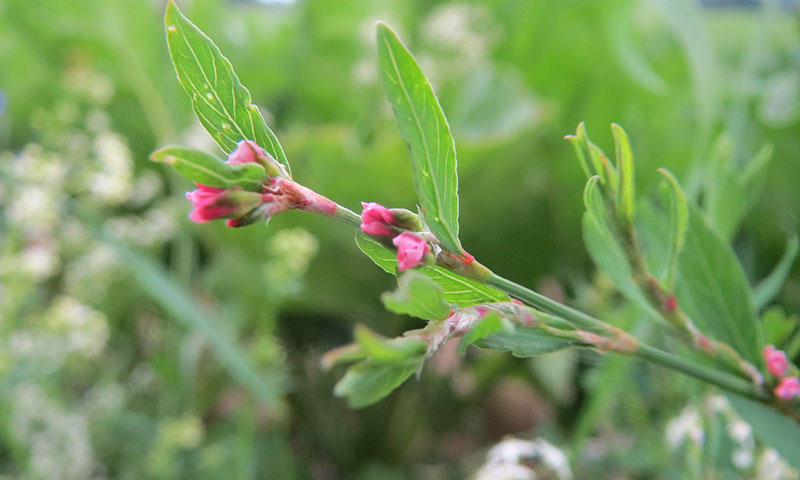
Knotweed Flowers
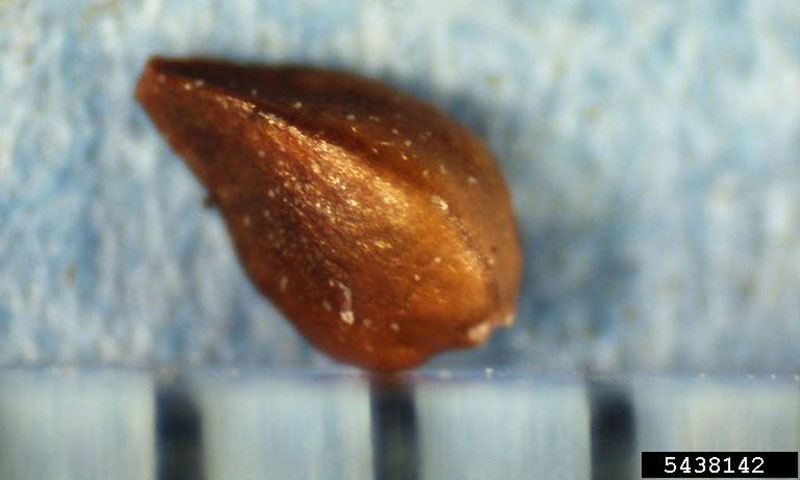
Knotweed Seed

